Should You Practice Rolling Over With a Baby
Rolling is one of baby's first significant motor milestones. Hello, mobility!
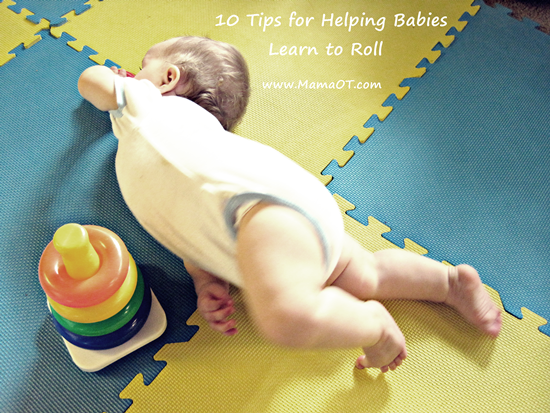
Not only is rolling the first step in developing postural control (important for later development of fine motor skills such as handwriting), it is also important because it engages a part of the brain responsible for making the left and right sides of the body "talk" to and coordinate with each other (important for reading, writing, and developing higher motor skills). Cool, huh…or am I the only nerd in the room?
Some babies are ready to roll from the get-go, while others take their time. On average, babies tend to first roll from tummy to back between 2-5 months, from back to side between 4-5.5 months, and from back to tummy between 5.5-7.5 months. Regardless of whether babies take the fast or slow road to rolling, their bodies begin preparing to roll wayyyyyy before they ever flip themselves over that very first time. And, guess what? YOU get to be a part of that preparation! This post contains affiliate links for your convenience (see full disclosure here).
Here are 10 tips for helping babies learn how to roll:
1. Set down and pick up baby while shifting his weight to the side in a rolling motion.You can start this one as soon as baby is born and — guess what? — it's super easy to incorporate into your daily routine. You can do this with every diaper change and sleep session which means, for a newborn, it can add up to 20 or more times a day. That's a lot of practice!
Here's how you do it: Sit baby on his bottom and roll him over to the side while setting him down. He will automatically try to keep his head from falling out of line with his body (a reflex with which babies are born), strengthening the muscles on the sides of his neck. This move also allows him to practice pushing against the floor with the arm on the way down. Simply reverse this motion when it's time to pick baby up. Be sure to practice rolling baby to both sides throughout the day…we don't want a baby who only moves to one side! Check out the photos below or watch a short video demonstrating this maneuver by clicking here.

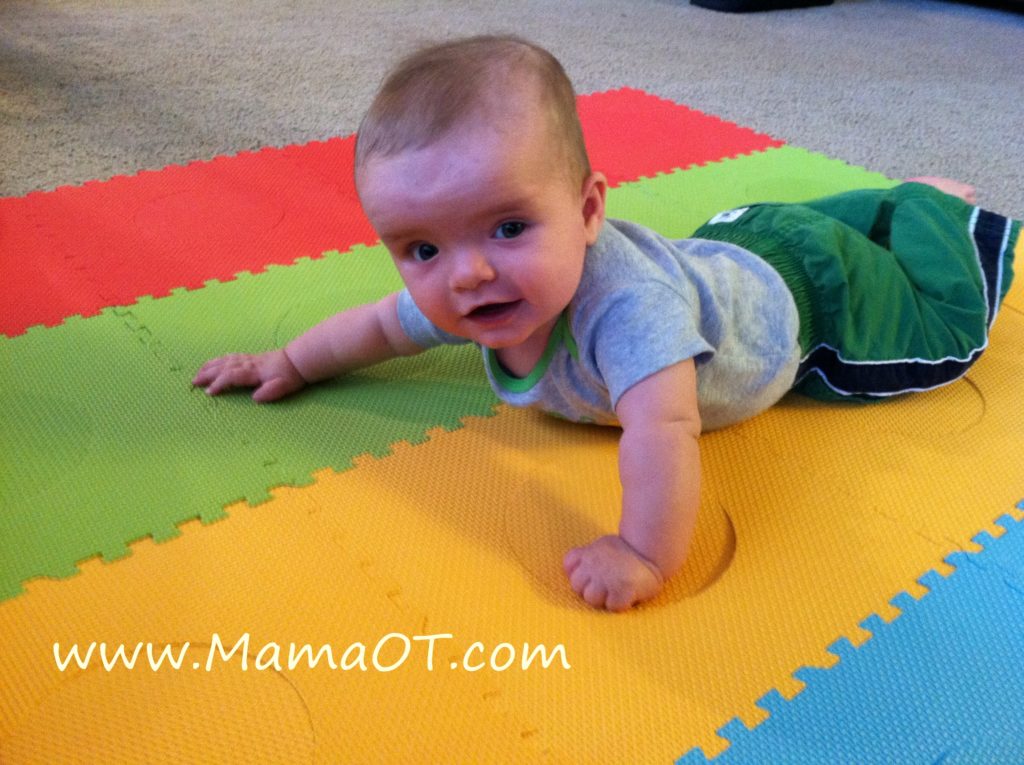
Once your baby is comfortable on his tummy and can push his chest off the floor, you may notice that he will start to rock his body side to side. This means he's on his way to initiating his new skill of rolling! It may be hours or weeks until he finally topples over for the first time, but the fact that he is practicing shifting his weight side to side is HUGE! For some babies who have trouble learning how to roll, this weight shifting thing is key.
Sometimes babies seem to get "stuck" in that pushed up position and just can't seem to figure out (or are uncomfortable with) shifting their weight side to side. You can help with this by guiding him in some slow, gentle side-to-side motions while he's pushed up as you sing a song like Row, Row, Row Your Boat or The Wheels on the Busand then help him shift his weight to the side just enough that he is able to finish the roll himself at the end of the song or verse. You can also help your baby shift his weight side to side on an exercise ball (learn more about that here) as he practices this skill in preparation for rolling. Just be sure to be super duper careful, move slowly, keep your hands on his mid-section at all times, and keep him on top of the ball (not coming down the side of the ball) so it doesn't slip out from under you/him.
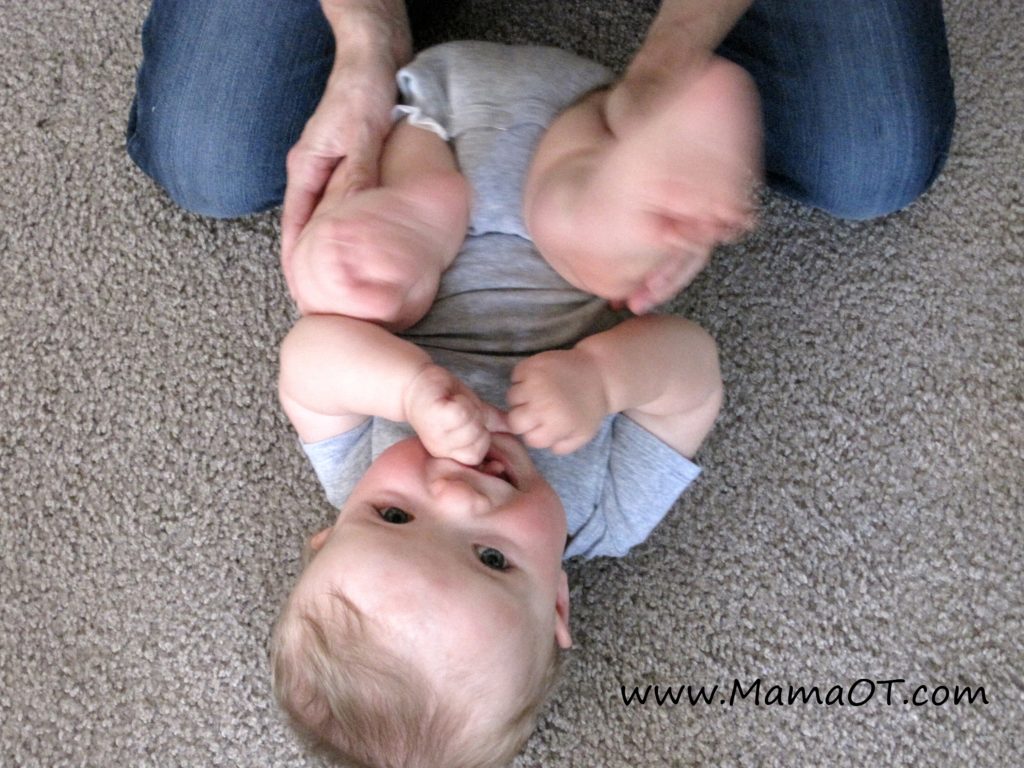
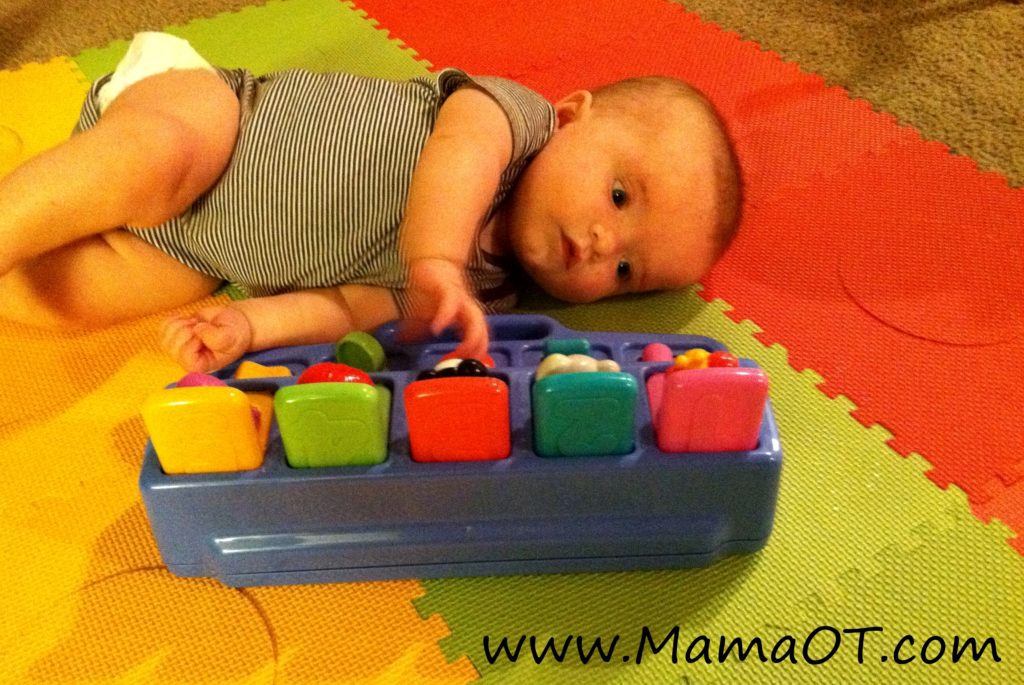
6. Allow baby to spend roughly equal amounts of time on all four sides of the body: tummy, back, left side, right side. This gives baby's body exposure to all positions involved in rolling as she strengthens her neck, trunk, and arms. It's also good for preventing the formation of flat spots on the back of her head which, if you ask me, is incentive enough to mix things up throughout the day. Try to vary baby's position about every 15-20 minutes.
7. Encourage baby to play at (and cross) his midline. Movement is performed in relation to the invisible line down the center of our bodies, and the ability to roll is dependent on a baby's ability to come to (and cross) that midline. The great thing is, our center moves with us wherever we go, so midline play can be done lying on the back or the side. Babies generally develop the ability to play with their hands in midline between 1-3.5 months (while on their back), and are able to look with their head in midline in this position between 4-5 months.
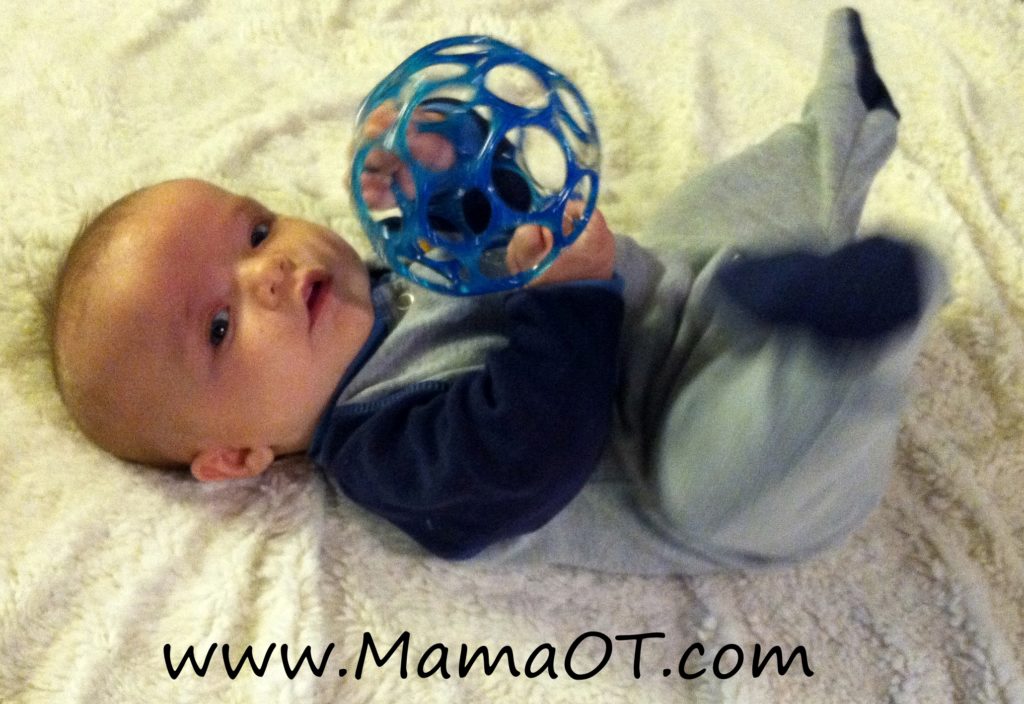
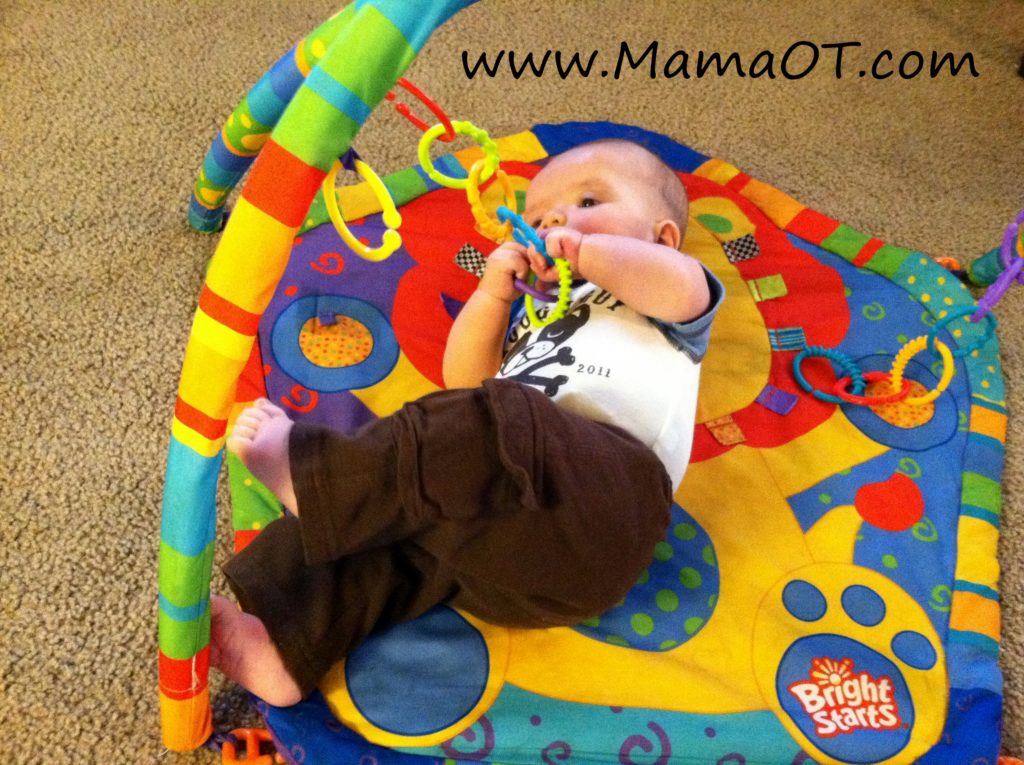
8. Encourage baby to separate movements of upper and lower body. Newborn babies are wired to keep their body in one line, so they'll do a "log roll" if you try to roll them over. The"segmental roll" typically develops between 4-5 months, as they are able to twist and separate the movements of the upper and lower body while initiating the roll with their hips. Once baby is comfortable playing at midline in the rounded position mentioned earlier, you can go ahead and move her back and forth through these twisting positions to the rhythm of your favorite children's song (Row, Row, Row Your Boat has won critical acclaim in our household). Start with both legs moving together, then progress to helping baby grab one foot with the opposite hand. Pause for a second after each twist in order to give baby's body a chance to register the movement, then proceed and let the good times roll!
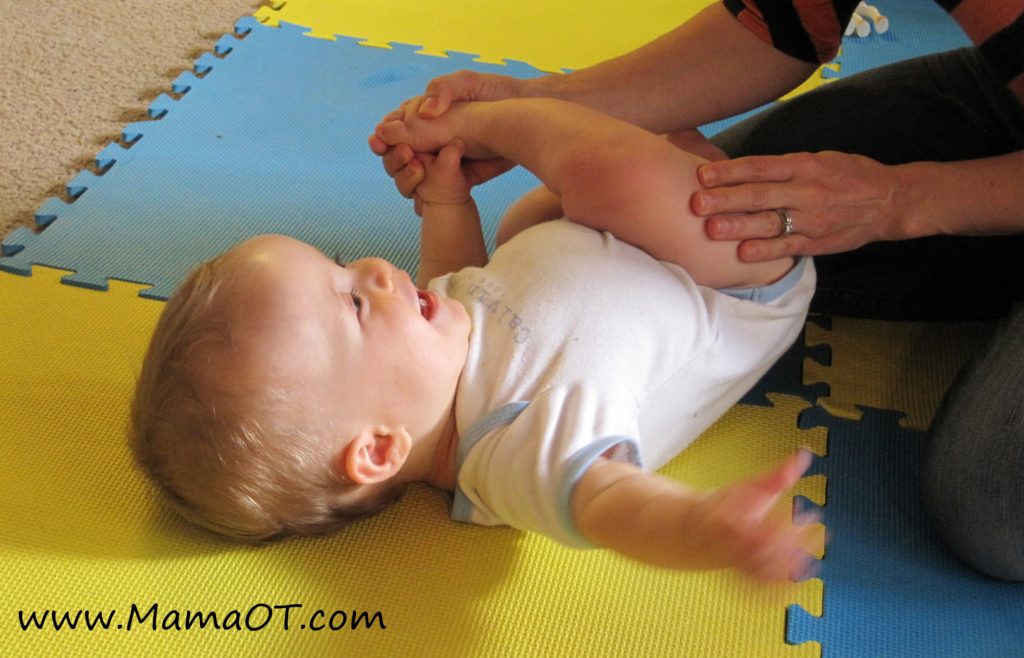
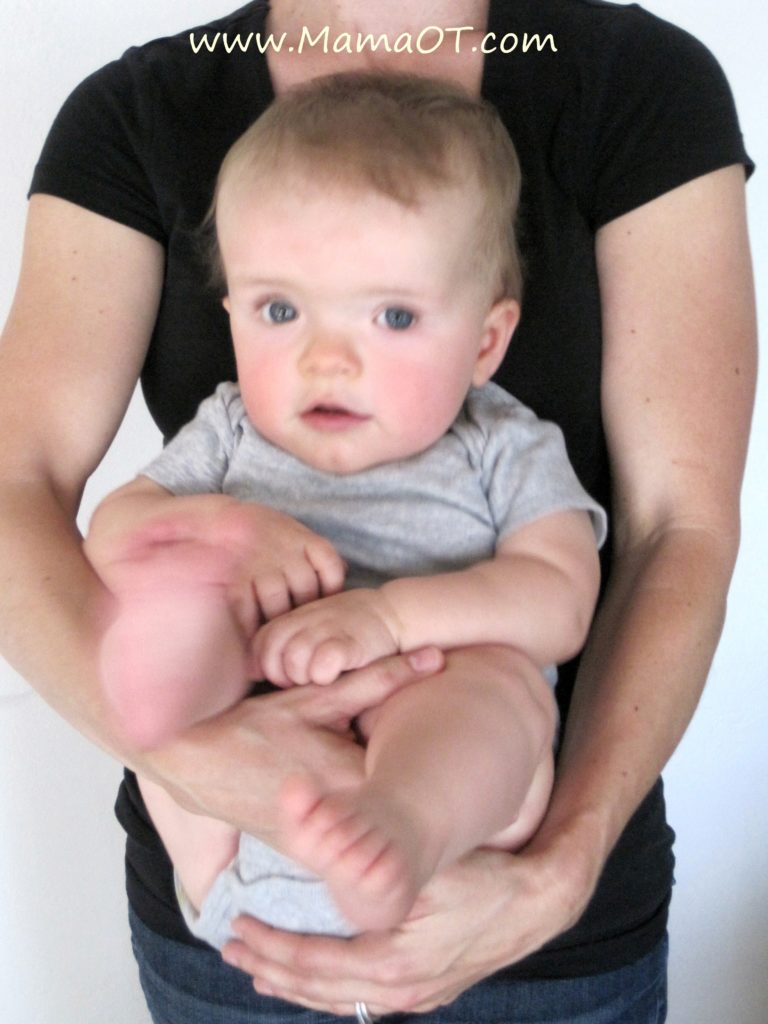

So there you have it! Ten ways to help babies learn how to roll. Don't go overboard with this stuff. We're not training babies for the Infant Olympics! Start with the basics, have fun, and let the baby be your guide. Share this information with people you know who may find it useful…the more who know about it, the better for our babies.
Want even more tips related to rolling?
The wonderful Starfish Therapies has put together this short video and post about how to encourage your baby to roll from back to tummy, plus this general post about encouraging rolling, and another post called "My Child Isn't Rolling Over: Should I Be Concerned?"
And Pediatric OT Anne Zachry has a really helpful book called Retro Baby which is filled with tips and activities to help your baby develop skills such as rolling, sitting, and crawling. You can read my review of Retro Baby by clicking here, or you can just head straight to Amazon to see it for yourself.
Alright, time to get rolling!
[convertkit form=4884621]
Should You Practice Rolling Over With a Baby
Source: http://mamaot.com/10-tips-for-helping-babies-learn-to-roll/#:~:text=Simply%20reverse%20this%20motion%20when,only%20moves%20to%20one%20side!
0 Response to "Should You Practice Rolling Over With a Baby"
Post a Comment